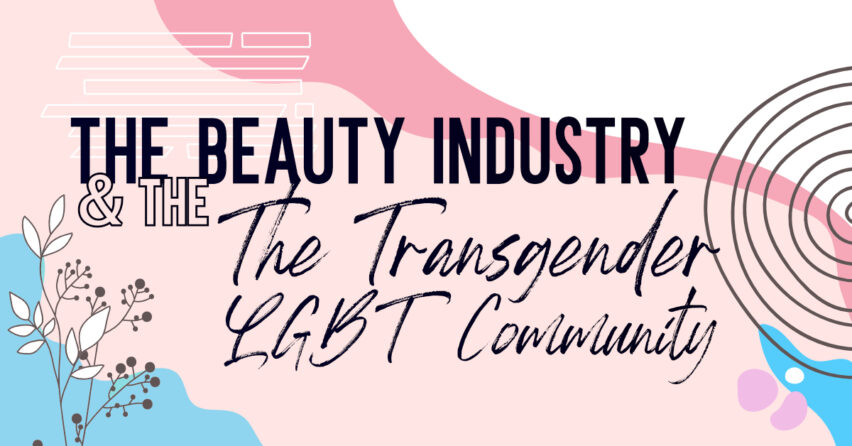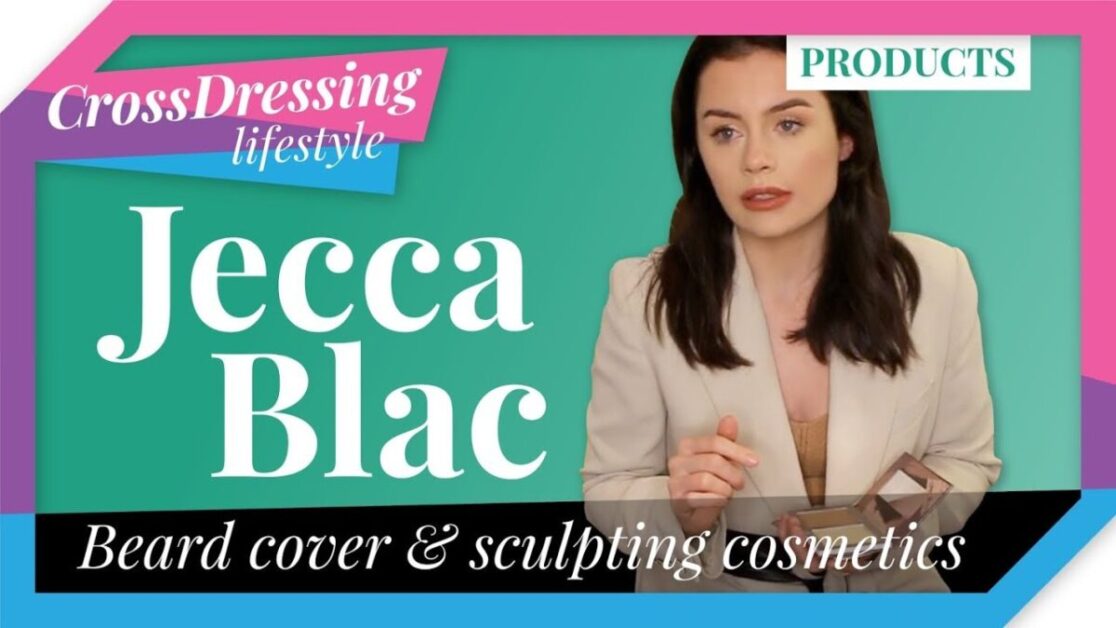The Beauty Industry and the Transgender-LGBT community
By Siobhan Donegan
Before talking about the Beauty industry within the context of the Trans and LGBT community, it would serve us well to say something briefly about the history of the cosmetics industry. It has been said that this history is as diverse and colourful as the cosmetic products that it has created. Historically, the use of makeup can be traced back to the ancient Egyptians (and probably earlier)-thus to 4000bc. These highly cultured people used Kohl to create their distinctive look. Early cosmetic products relied heavily on natural ingredients, such as berries, bugs and charcoal, to name but a few. In the ‘Roaring Twenties’ the beauty industry really took off with the new joyous femininity of the flapper movement. Elizabeth Arden opened a Salon and Max Factor apparently created a foundation for film stars. The Era of sophisticated eyebrows was inaugurated with the Stardom of Greta Garbo, and thus eyebrow pencils and mascara came onto the cosmetics market. With the ‘Swinging Sixties’ came a Mod look epitomised by the Model Twiggy. The 1990’s was the Era of the ‘Super Model’, and today with the Beauty industry estimated at 425 billion dollars, there is much more emphasis on the health and ‘science’ of beauty products.
The Beauty Industry as such has been part of the aesthetic cultural definition of beauty and femininity for decades.
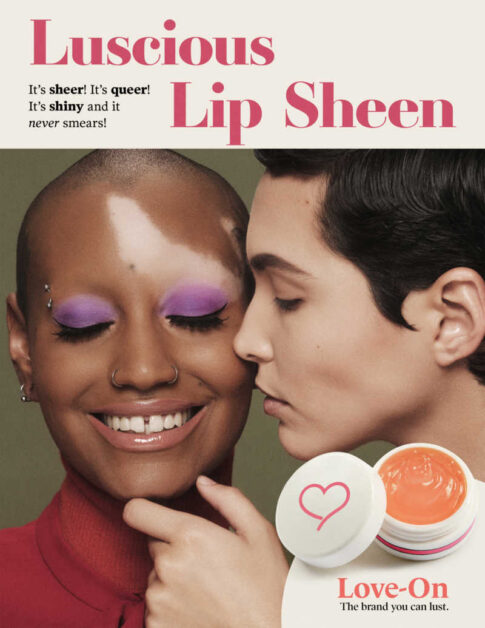 However, now that gender identity-gender expression is going through a revolution, Cosmetic Retailers are starting to ‘Court Trans and gender non-conforming customers’. In fact the Beauty Industry is endeavouring to build bridges across the heteronormative gender binary it once supported as makeup-cosmetics are no longer the exclusive reserve of flamboyant Rock Stars. This of course is a good thing, as according to Cosmetic Mogul Jeffree Star, interviewed in ‘Out’ magazine: ‘The Industry needs more creativity’. It could be claimed with some justification that the ‘gender revolution’ has acted as a catalyst to a veritable Beauty Industry Revolution and as such new cosmetic brands are being launched in a genuine attempt of an all embracing inclusivity, that takes into consideration age, cultural backgrounds, diverse body types and gender variant identity expression.
However, now that gender identity-gender expression is going through a revolution, Cosmetic Retailers are starting to ‘Court Trans and gender non-conforming customers’. In fact the Beauty Industry is endeavouring to build bridges across the heteronormative gender binary it once supported as makeup-cosmetics are no longer the exclusive reserve of flamboyant Rock Stars. This of course is a good thing, as according to Cosmetic Mogul Jeffree Star, interviewed in ‘Out’ magazine: ‘The Industry needs more creativity’. It could be claimed with some justification that the ‘gender revolution’ has acted as a catalyst to a veritable Beauty Industry Revolution and as such new cosmetic brands are being launched in a genuine attempt of an all embracing inclusivity, that takes into consideration age, cultural backgrounds, diverse body types and gender variant identity expression.
Furthermore, it would seem that the strategy of diversity is working, as new customers are being attracted into the orbit of these cosmetic products.
It would also seem that the gender variant non-conforming revolution, making new forms of gender expression possible and the endorsement of diversity through ‘identity politics’ is also being acknowledged in the Fashion World as Virgil Abloh, new title of Menswear Artistic Director of Louis Vuitton, has deliberately sent a message of diversity and inclusion with, in the first place a rainbow hued cat-walk, and in the second place using a diverse cast of models to achieve a message of inclusivity.
One such Cosmetic Beauty brand, with a policy of inclusivity for the Trans community is Sephora. Karalyn Smith, Sephora’s’ SVP for human resources, told ‘Fast Company’: “The Beauty Industry at large has made strides towards becoming more diverse and inclusive.” This Cosmetic retailer is debuting ‘complimentary in store workshops’ specifically aimed at transgender and gender non-conforming individuals. This is Sephora’s ‘Bold Beauty Classes for Confidence’, specifically aimed and based on the premise of empowerment for transgender, non-binary and queer individuals. Sephora is also working within the context of being supportive to transgender individuals during transition, in all probability referring to the early stages of transition, as this is a truly significant moment for the individual.
According to Dominique Anderson, a Trans-makeup artist who teaches in the above mentioned ‘Classes for Confidence’ most Transgender people don’t feel included in the Beauty World, despite the fact that makeup has been central to the Queer and Trans community as a tool of expression, including gender expression. The Makeup Tutorials, especially in place for the Trans and Non-binary community, as already mentioned are supportive of significant moments of transition, including ‘workforce re-entry’. The cosmetic Tutorials specifically honed for the Trans-Female community, offers tips for covering up facial hair, and sculpting-contouring cheekbones to feminize them (in all probability using makeup to feminize other features as well)-in fact the Tutorials offer advice on the ‘accentuation’ of desired facial features.
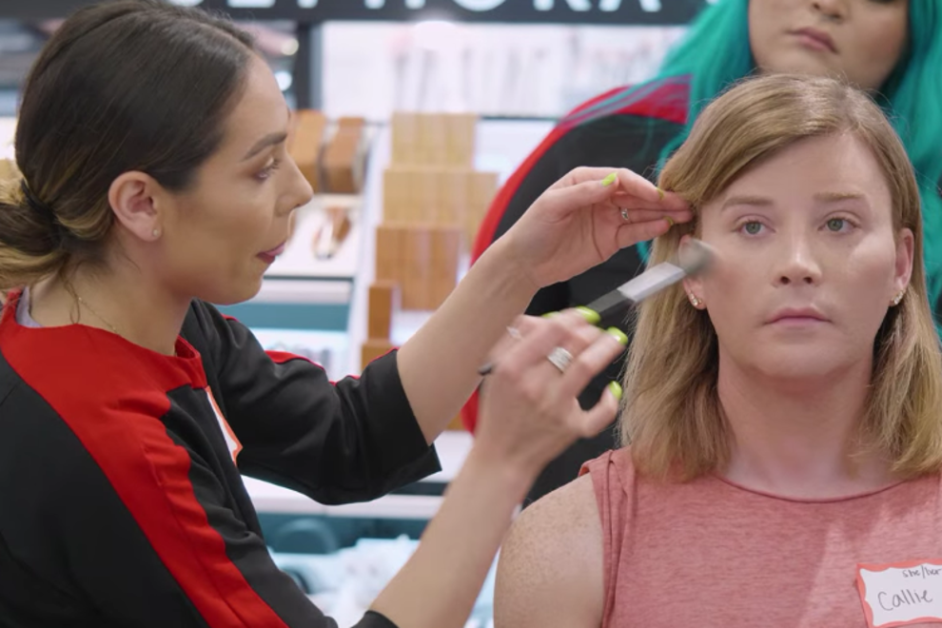 The 90 minute Cosmetic Tutorials at Sephora, also include advise on skin care products, which is particularly significant here as Transwomen as part of their transition go through hormone replacement treatment HRT, some Transwomen of course have Plastic Surgery- Facial Feminization Surgery, and lastly of course there is Laser Hair Removal or for the same cosmetic ends Electrolysis. All of these processes can of course cause skin blemishes, and the clients are offered advice on how to conceal these.
The 90 minute Cosmetic Tutorials at Sephora, also include advise on skin care products, which is particularly significant here as Transwomen as part of their transition go through hormone replacement treatment HRT, some Transwomen of course have Plastic Surgery- Facial Feminization Surgery, and lastly of course there is Laser Hair Removal or for the same cosmetic ends Electrolysis. All of these processes can of course cause skin blemishes, and the clients are offered advice on how to conceal these.
‘Makeup has no Gender’ is another cosmetics ‘Unisex’ brand created as a Trans-inclusive product from ‘Jecca Blac’, which is London based and used to be known simply as Jecca Makeup, and was created by Jessica Blacker. This line was created in collaboration with Joseph Harwood, who identifies as Non-binary, and has been marketed for the unisex and transgender community, and like Sephora this company also offers one-to-one tutorials. Their Cosmetic product is specifically a ‘Colour Cosmetics Line’ and is a ‘Correct and Conceal Palette’, formulated as a ‘preventative’ of beard shadow and ‘blue tone’, a common problem for Transwomen and those on the Trans-Feminine spectrum at an early stage in their transition. According to Blacker, who started out by running-hosting a series of makeup tutorials from her home, this particular line has a ‘Cutting edge formula’ and ‘Clients literally transform their face-looking like who they really are’.
It is at this juncture that I wanted to speak about the online exhibition called ‘Prim-n-Poppin’, as I find this creative endeavour particularly appealing. This is primarily an artistic re-imagination of ‘old school’ beauty ads that are mostly white, mostly thin and mostly Cisgender Female. This has specifically taken the glamorous aesthetic of the old fashioned way of selling cosmetic beauty products particularly in the women’s magazines of the 1960’s and the 70’s and imaginatively ‘reshaped’ them to include more diversity as regards the range of models, thus Queer, Trans and Non-Binary.
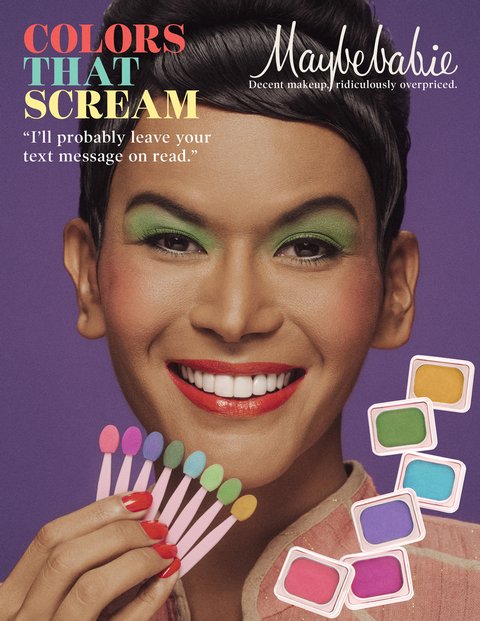 As such these reimagined ‘Old School Style’ Ads have a certain retrosexual-retro-chic appeal. There is bright eyeshadow, the requisite ‘cheesy’ smiles, and of course updated phrases. The exhibition of these wonderful images was created by New York Photographer Julia Comita and Makeup Artist Brenna Drury. The Ads themselves from an artistic aesthetic perspective have a ‘vintage’ look-shot in ‘Hues of cool pinks and pastel blues’. In fact the creative team endeavoured to be as authentic as possible, ‘With graphic design and photography from the period’. The all-important difference here of course is these adverts feature racially diverse and LGBT Models. Another member of the creative-team who should be mentioned, was Hairstylist Raina D. Leon, who made sure that the hairstyles of all the models were styled to ‘retro perfection’.
As such these reimagined ‘Old School Style’ Ads have a certain retrosexual-retro-chic appeal. There is bright eyeshadow, the requisite ‘cheesy’ smiles, and of course updated phrases. The exhibition of these wonderful images was created by New York Photographer Julia Comita and Makeup Artist Brenna Drury. The Ads themselves from an artistic aesthetic perspective have a ‘vintage’ look-shot in ‘Hues of cool pinks and pastel blues’. In fact the creative team endeavoured to be as authentic as possible, ‘With graphic design and photography from the period’. The all-important difference here of course is these adverts feature racially diverse and LGBT Models. Another member of the creative-team who should be mentioned, was Hairstylist Raina D. Leon, who made sure that the hairstyles of all the models were styled to ‘retro perfection’.
Before finishing this article I wanted to mention one more Trans-inclusive beauty product, this is the newly launched cosmetic line ‘Fluide’. According to the brands creator Isabella Giancarlo: ‘Makeup can be one powerful tool in self-actualisation’. A brand new line that has been launched by Fluide, and described as perhaps their most exciting product to appear is their new Eyeshadow palette, as this has neon shades of blue, yellow, green and silver.
I will simply end by saying that ‘Sephora’ also does YouTube Tutorials.
